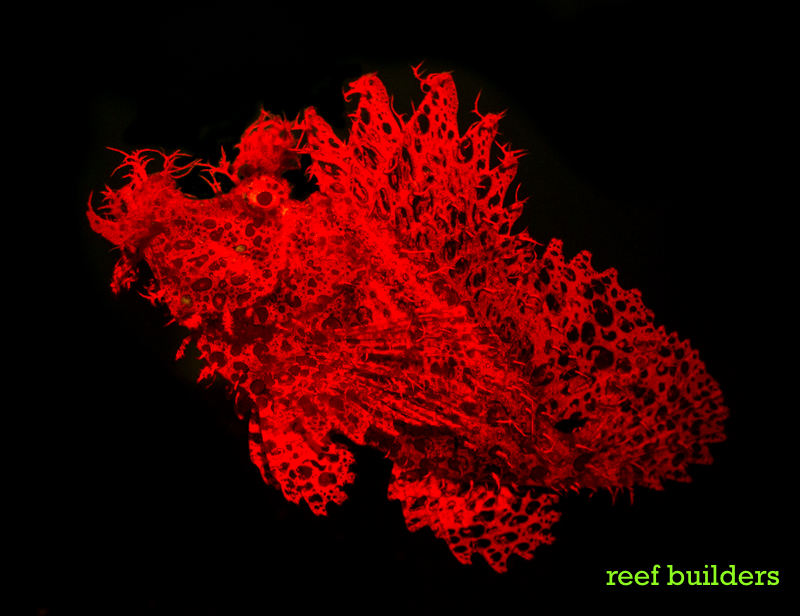Coral reefs are one of the most richly fluorescent ecosystems on the planet. When it comes to fluorescence, most of us reef aquarists tend to think of corals first, but many of the tropical reef fish in your tanks right now have fluorescent properties of their own.
The last few years have unearthed a flurry of discoveries regarding fluorescent reef fish, beginning with red fluorescent fish in the Red Sea and more recently with ‘biofluorescence’ discovered to be widespread in marine fish. We’ve tried our hand at photographing fluorescence in wild corals before, but the past few weeks we dabbled in photographing fluorescence in some of our favorite marine fish.

Our fluorescent investigation of reef fish late one night at Bali Aquarium yielded a number of unexpected surprises, with many familiar fishes being successfully photographed in completely unfamiliar spectrum. We already knew that flasher and fairy wrasses fluoresced a nice deep red, and the coveted Red Rhinopias fluoresced a deep red to compliment its daylight coloration.
What was unexpected is that we found a chinstrap jawfish fluorescing a brilliant green, and so did the illustrious borbonius anthias. The orange coloration of the Tomiyamichthys goby and a dragonface pipefish is especially attractive, but the biggest surprise came from the cleaner wrasse. Labroides dimidiatus, a fish which is black and blue in regular lighting fluoresced a deep red under fluorescent lighting! However this wasn’t true for the related bicolor cleaner wrasse which we also sampled.
The natural, human reaction to the fluorescence of reef fish is to ask why this phenomenon is so widespread across both bony fish, sharks & rays, and even reptiles. Some proteins are just coincidentally fluorescent, but in the case of the Rhinopias, it makes sense that it would fluoresce red just as the macroalgae that it mimics also fluoresces red. For our part we’re just happy to enjoy this natural occurrence in both our reef corals and fish and we hope you’ll agree it makes for some stunning natural imagery.










